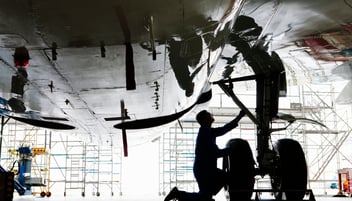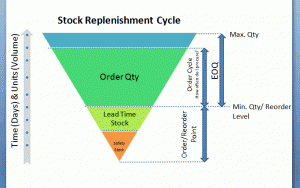
How Smart Stock Replenishment can enhance the efficiency of Aircraft Operators???
Published :

Aviation industry being extremely capital-intensive, investment in inventory makes up for nearly one third of the capital of many aircraft operators. This makes the Stock Management process a sure opportunity area for enhanced competence and paybacks. Even a nominal decrease in inventory spending would lead to huge boost in unlocking capital. At the same time, aircraft operators have to grapple with ever-changing business scenarios to keep their aircraft on-air. Seasonal demand (based on vacation times) and consumption levels (based on economic conditions) are the primary drivers of demand and slump for airline companies. Humongous inventory costs coupled with volatile business fortunes are forcing operators to refurbish their stock/inventory process onboard intelligent software. Consider this recent happening: One of the world’s largest airlines (in terms of passengers carried), held inventory worth US $ 1 billion in the past. The company embarked on an intricate inventory management overhaul and a smart Material Management system was implemented, the results of which were beyond belief. Not long after the company reaped the harvest of automation and digitization, as hand held stock of parts cost was reduced to about US $ 600 million. Extending the definition of Replenishment The most common meaning of replenishment as found in dictionaries is "filling again by supplying what has been used up." Does this definition consider factors, such as the demand and supply variations, the timeline for procurement of parts (lead time), the demand during the procurement process (lead time demand), part alternatives, procurement and storage costs just to name a few, crucial to the Airline industry? Considering these and more drivers including breakneck digital, technological and fuel-efficient innovations, it would be inappropriate to look at replenishment as just a filling-up-quantities event. Rather, replenishment must be viewed as a critical process driven by scientific and market-driven parameters to ensure mega savings. Ramco Aviation - Stock Replenishment Ramco Aviation offers a path breaking Stock Replenishment feature that aims to banish stock outs and stock piles. This feature provides a personalized and parameterized solution for deriving optimum stock replenishment levels for aircraft parts. For example, the application helps Inventory Planners to compute replenishment levels for multiple parts at a single warehouse or multiple parts across multiple warehouses at one go, after incorporating vital warehouse-specific and part-specific dependencies. Optimum replenishment levels for a part could differ in various warehouses depending on their accessibility, geographical location, consumption/demand patterns, and procurement & storage costs/facilities. All these consequential factors can be applied in simulation/computation to arrive at the ideal replenishment levels including safety stock, minimum quantity, reorder level, EOQ and maximum quantity as illustrated in the above image.
Benefits of Ramco Replenishment feature
What’s more, you can achieve all the above from a single screen, making this process centralized, swift and seamless!!! Ramco Replenishment with its inbuilt capabilities puts your inventory operations in sync with business conditions thus pre-empting any losses occurring on the inventory front. Next to fuel, part maintenance forms the largest chunk of operating costs for aircraft operators. Deficient inventory management, besides escalating material costs impacts maintenance schedules and airworthiness causing aircraft grounding. Cascading effects can be worse. Airline industry being a service industry, grounding of aircraft could fling flight schedules leading to evaporation of revenues and goodwill. Considering these factors, it would only be appropriate to reiterate that Smart Stock Replenishment is a compelling option for the Aviation industry.

All Rights Reserved. © Copyright 2024. Ramco Systems.